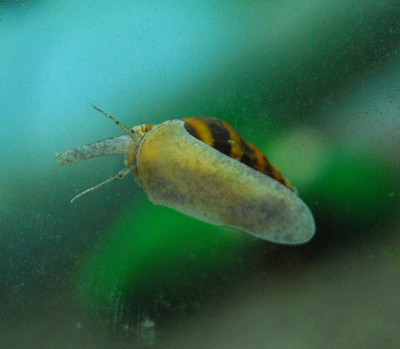The Assassin Snail: A Tiny Warrior of Aquatic Ecosystems
Posted by Max Gandara on on 6th Jun 2023
The Assassin Snail: A Tiny Warrior of Aquatic Ecosystems
Introduction:
Nature never ceases to amaze us with its diverse range of creatures, and
one such fascinating species is the Assassin Snail (Clea helena). This
diminutive freshwater snail, with its distinct appearance and predatory
behavior, has gained popularity among aquarium enthusiasts for its
ability to control population explosions of pest snails. In this
article, we delve into the intriguing world of the Assassin Snail,
exploring its characteristics, habitat, behavior, and significance in
aquatic ecosystems.
Appearance and Characteristics:
The Assassin Snail is relatively small, typically growing to about an
inch in length. Its elongated shell showcases beautiful shades of yellow
or brown, adorned with dark spiral patterns. The shell's shape is
cone-like, with a sharp apex, distinguishing it from other snail
species. Its body is muscular and flexible, allowing it to maneuver
through various aquatic environments with ease.
Habitat and Distribution:
The native range of the Assassin Snail spans across Southeast Asia,
specifically in regions such as Thailand, Malaysia, and Indonesia.
However, due to its popularity in the aquarium trade, it has been
introduced to numerous other parts of the world. In the wild, Assassin
Snails inhabit slow-moving freshwater bodies, including streams, rivers,
ponds, and rice fields. They typically reside in sandy or muddy
substrates, using their long foot to burrow and search for prey.
Diet and Feeding Behavior:
True to their name, Assassin Snails are carnivorous predators. They have
a remarkable appetite for other snails, including those commonly
considered as pests in aquariums, such as Malaysian Trumpet Snails and
Pond Snails. These snails possess a sharp, retractable proboscis that
they use to puncture and consume their prey. In addition to snails,
Assassin Snails may also feed on various organic matter, detritus, and
decaying plant material.
Reproduction and Lifecycle:
The Assassin Snail exhibits sexual dimorphism, with males usually being
smaller and slimmer than females. They are live-bearers, and mating
occurs through an exchange of sperm packets. After fertilization, the
female retains the eggs within her body until they hatch. Typically, a
female Assassin Snail can give birth to a small brood of miniature
snails, ranging from a dozen to around thirty offspring. The young
snails develop rapidly and can reach sexual maturity within a few
months.
Significance in Aquatic Ecosystems and Aquariums:
One of the primary reasons for the rising popularity of Assassin Snails
in the aquarium trade is their ability to control unwanted pest snail
populations. In captivity, snail overpopulation can occur, leading to
issues such as excessive algae growth and compromised water quality. By
introducing Assassin Snails, aquarium owners can employ a natural,
environmentally friendly method to keep the pest snail numbers in check,
without resorting to chemical treatments. However, it is crucial to
monitor their population to prevent them from decimating all the snails
in an aquarium.
Conclusion:
The Assassin Snail, with its remarkable appearance and predatory nature,
serves as a fascinating addition to aquatic ecosystems and aquariums
alike. Its ability to regulate pest snail populations makes it a
valuable tool for aquarium enthusiasts seeking a natural means of
control. By understanding and appreciating the characteristics and
behavior of these tiny warriors, we can continue to foster a harmonious
balance in aquatic environments, while enjoying the captivating beauty
of the Assassin Snail.

